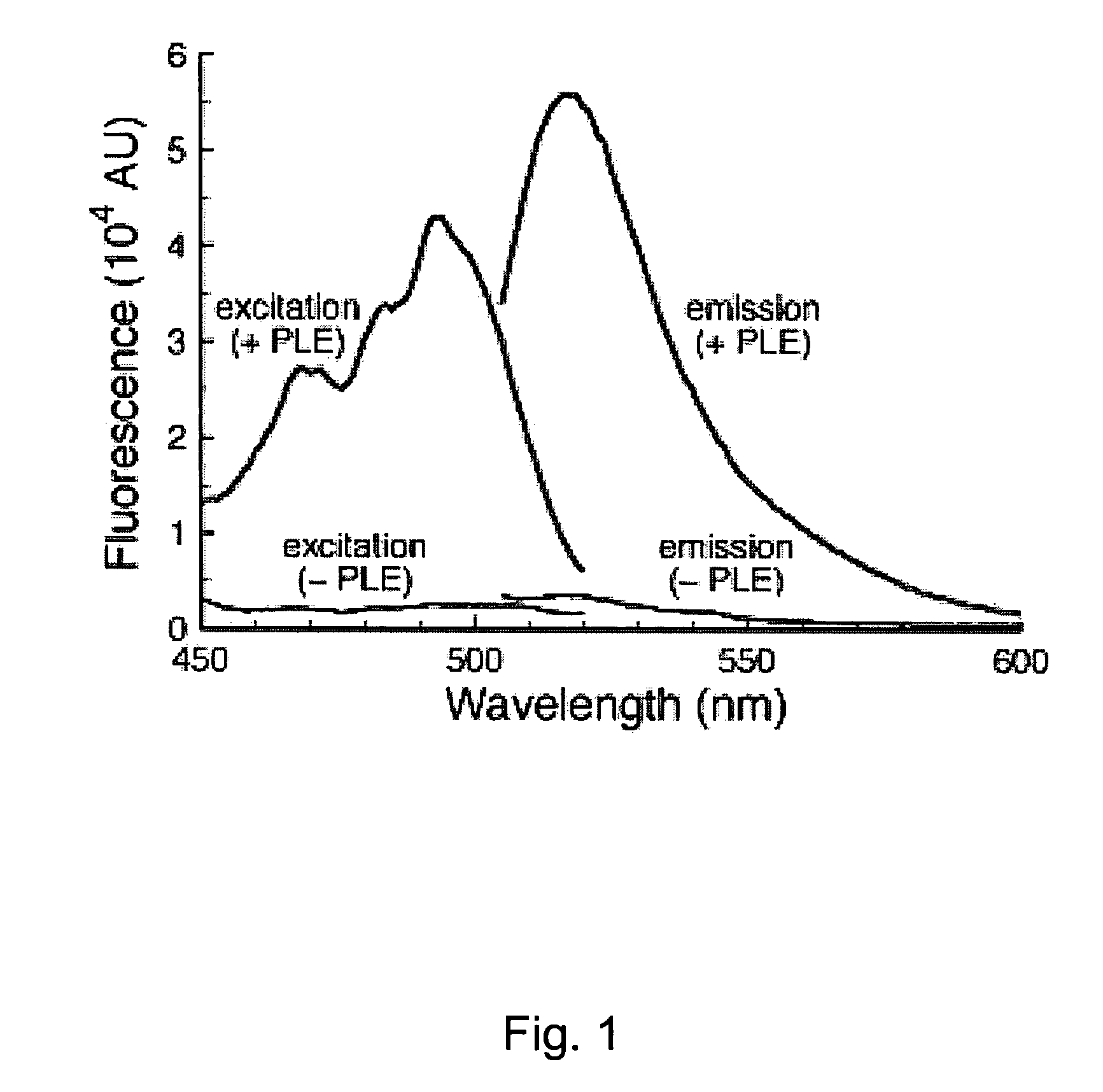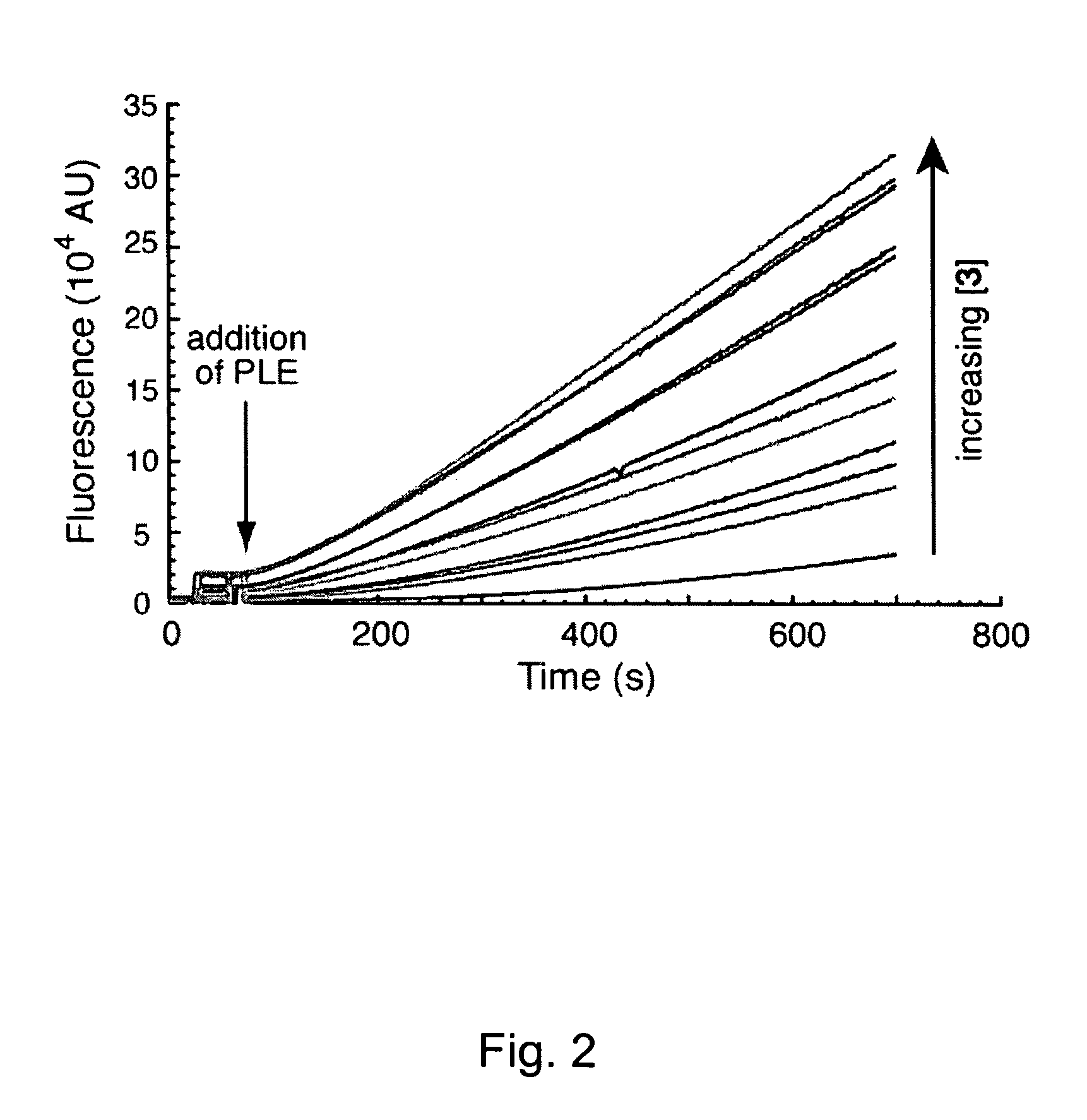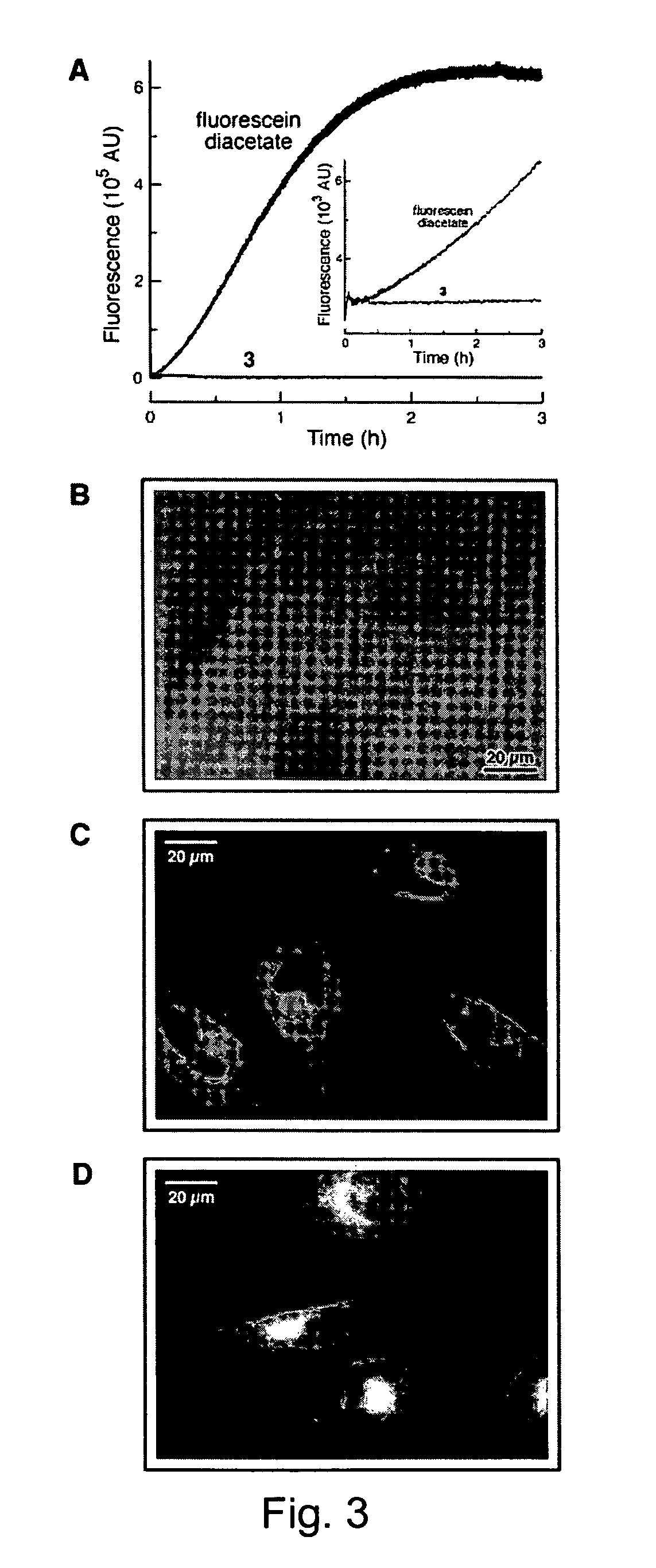Fluorescence assays with improved sensitivity
a technology of fluorescence assay and sensitivity, which is applied in the field of fluorescence assay with improved sensitivity, can solve the problems of reducing the detection limit and sensitivity of fluorescence assay
- Summary
- Abstract
- Description
- Claims
- Application Information
AI Technical Summary
Problems solved by technology
Method used
Image
Examples
examples
Esterase Assay Using Trimethyl Lock
[0076]In this example, rhodamine was linked to two trimethyl lock-containing compounds through amide bonds, using the procedure described below. The amide bonds linking the trimethyl lock-containing compounds to the rhodamine backbone cleave rapidly upon reaction with an esterase trigger, releasing rhodamine. In the trimethyl lock system, steric strain from the three methyl groups forms a lactone, which releases the amines of the rhodamine through acyl transfer. These reactions are shown generally in Scheme XI, where the R groups are as defined above.
[0077]
[0078]The rhodamine amide has negligible fluorescence, but upon release of the blocking groups, the fluorescence increased by approximately 1000 times.
[0079]In a particular example, Rhodamine 110 was used as the fluorescent compound. The amide groups of N,N-diacetylated rhodamine 110, which has been used as a protease substrate, are stable in a HeLa cell extract (data not shown). Nonetheless, the...
PUM
| Property | Measurement | Unit |
|---|---|---|
| pH | aaaaa | aaaaa |
| concentrations | aaaaa | aaaaa |
| excitation wavelength | aaaaa | aaaaa |
Abstract
Description
Claims
Application Information
 Login to View More
Login to View More - R&D
- Intellectual Property
- Life Sciences
- Materials
- Tech Scout
- Unparalleled Data Quality
- Higher Quality Content
- 60% Fewer Hallucinations
Browse by: Latest US Patents, China's latest patents, Technical Efficacy Thesaurus, Application Domain, Technology Topic, Popular Technical Reports.
© 2025 PatSnap. All rights reserved.Legal|Privacy policy|Modern Slavery Act Transparency Statement|Sitemap|About US| Contact US: help@patsnap.com



